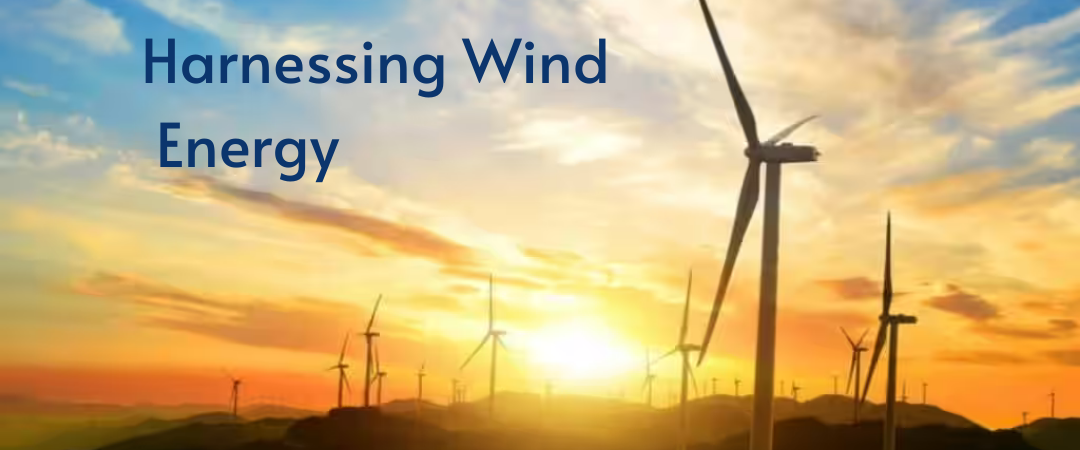


In a global context dominated by concerns about climate change and a growing emphasis on sustainability, India is making significant strides toward a more environmentally friendly future. The nation has set an ambitious target of achieving 500 gigawatts (GW) of renewable energy by 2030, with a substantial portion, 140 GW, expected to come from wind power. This commitment positions India as a trailblazer on the global stage. The growth in India's wind power capacity has been remarkable, reaching around 43 GW in March 2023, a significant leap from a mere 1.2 GW in 2000. This accomplishment of harnessing wind energy, has propelled India to the fourth position globally in terms of installed wind capacity.
Presently, wind power constitutes about 10% of India's total installed capacity and a substantial 25% of its overall renewable capacity. India's aspirations are high, with approximately 11 GW of wind projects currently under construction. The government plans to award around 10 GW of wind projects annually, starting from the fiscal year 2024, to meet the ambitious target of 500 GW of renewable capacity by 2030. The overarching goal is to fulfil nearly 50% of the country's electricity needs through renewable energy sources by 2030, ultimately achieving a net-zero economy by 2070.
A key strategy driving India's wind energy expansion is the integration of wind and solar power. Many states with high wind potential also have abundant solar resources, such as Tamil Nadu, Karnataka, Maharashtra, Andhra Pradesh, Rajasthan, and Gujarat. This synergy allows for greater benefits, with wind-solar hybrid projects capable of achieving a capacity utilization factor (CUF) of up to 65%, compared to the 20%-40% CUF of standalone projects.
When considering the levelized cost of electricity (LCOE), wind power emerges as the second most competitive renewable energy source, with costs ranging from INR 2.8 to 3.3 per kilowatt-hour (kWh). This is approximately 40% lower than the current landed grid tariff to consumers. Wind-solar hybrid projects fall within a similar price range, positioning themselves between standalone solar and wind sources. Wind-solar hybrid projects, when combined with battery storage, provide an appealing approach for ensuring continuous power supply. Although the cost of batteries remains a challenge currently, it is anticipated that by 2026, as battery prices decrease, these solutions will become more competitive, with LCOEs ranging from INR 3.8 to 4.2 per kWh.
Harnessing the wind energy industry is expected to receive a significant boost with the shift away from the reverse auction regime. The Ministry of Power's recent announcement replaces reverse auctions with a "Single Stage, Two Envelope, closed bid basis," providing the necessary impetus to the wind industry. However, despite the impressive expansion of India's wind capacity, domestic manufacturing capacity still lags. The government's plan to auction around 10 GW annually underscores the need to ramp up domestic manufacturing and enhance support systems such as logistics, digitization, analytics, and skilled manpower.
With demand for wind power coming from various sectors, including central, state, and commercial and industrial procurement, it is estimated that India will witness the commissioning of 70-80% of new wind capacity auctioned in the next five years. This demand is crucial for distribution companies (DISCOMs) that require a consistent power supply for efficient planning. To ensure grid stability, a mix of renewables and other sources, including energy storage systems (ESS), is required. Recent auctions for 1 GW of round-the-clock projects indicate pricing ranging from INR 3.99 to 4.27 per kWh, with the majority projects integrating renewable energy with thermal sources. As ESS costs decline, it is expected that more round-the-clock projects relying solely on renewable energy will further boost wind installations.
India's commitment to achieving carbon neutrality by 2070 requires a comprehensive shift away from coal generation toward renewable energy, with wind playing a critical role. Initiatives aimed at repowering—which entail swapping out outdated parts for more modern turbines—will improve project economics and accelerate the expansion of wind installations in India. Additionally, the expected increase in Renewable Purchase Obligation (RPO) targets, reaching up to 30% by FY25 and 43% by FY30, will further bolster demand growth. Long-term prospects for India's wind industry remain strong as the country transitions to competitive, low-carbon technologies that promote sustainable growth and a cleaner, greener future.